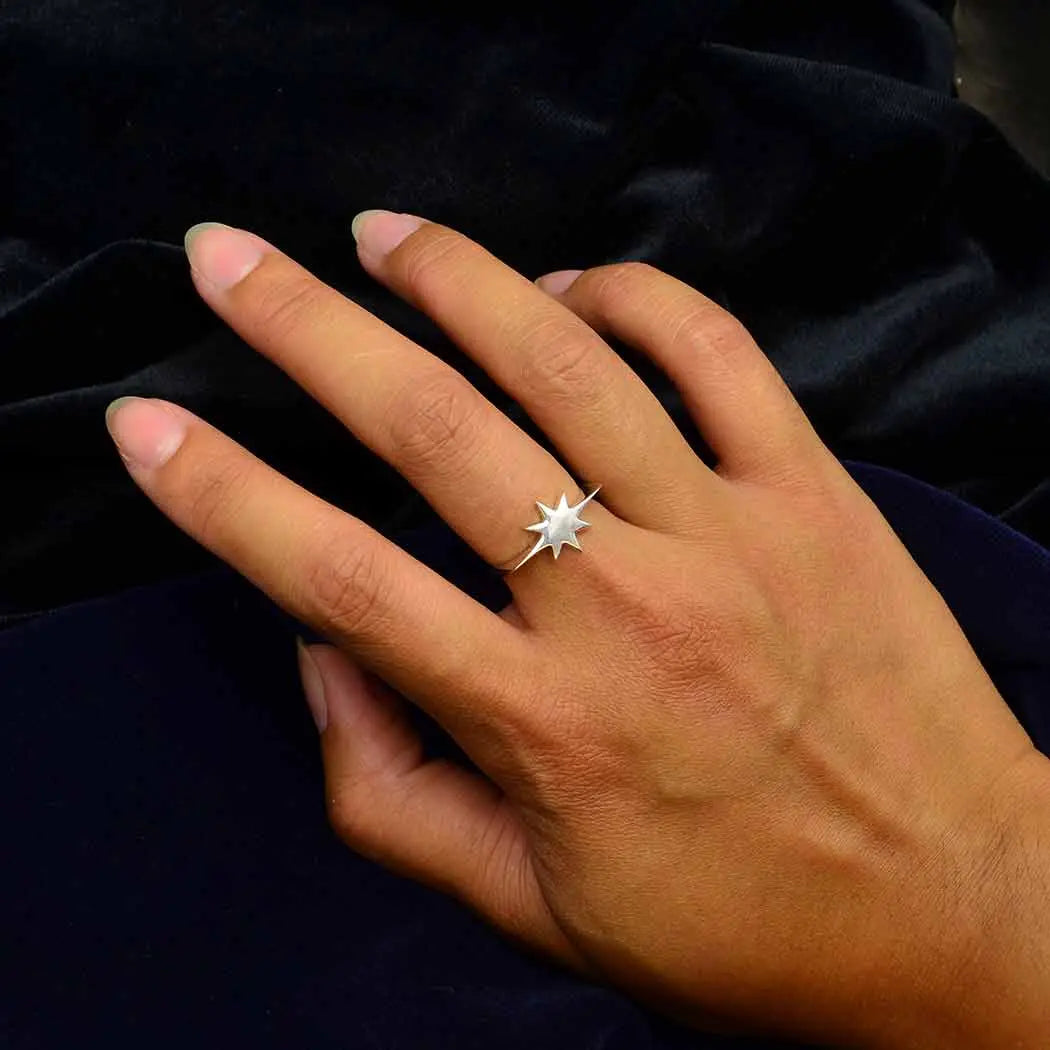Tarazed Gems & Jewellery
North Star (Polaris) Sterling Silver Ring
North Star (Polaris) Sterling Silver Ring
Couldn't load pickup availability
North Star (Polaris) Sterling Silver Ring
Origin: Thailand
Material: Sterling Silver (925)
Approximate Top Dimensions: 1.6cm x 1cm
Approximate Band Dimensions: 0.2cm
Weight: 2g
10% of this purchase will be donated to The Biodiversity and Nature Conservation Association (BANCA)
In antiquity, Polaris was not yet the closest naked-eye star to the celestial pole, and the entire constellation of Ursa Minor was used for navigation rather than any single star. Polaris moved close enough to the pole to be the closest naked-eye star, even though still at a distance of several degrees, in the early medieval period, and numerous names referring to this characteristic as polar star have been in use since the medieval period. In Old English, it was known as scip-steorra ("ship-star") In the Old English rune poem, the T-rune is apparently associated with "a circumpolar constellation", or the planet Mars.
In the Hindu Puranas, it became personified under the name Dhruva ("immovable, fixed"). In the later medieval period, it became associated with the Marian title of Stella Maris "Star of the Sea". An older English name, attested since the 14th century, is lodestar "guiding star", cognate with the Old Norse leiðarstjarna, Middle High German leitsterne.
The ancient name of the constellation Ursa Minor, Cynosura (from the Greek κυνόσουρα "the dog's tail"), became associated with the pole star in particular by the early modern period. An explicit identification of Mary as stella maris with the polar star (Stella Polaris), as well as the use of Cynosura as a name of the star, is evident in the title Cynosura seu Mariana Stella Polaris (i.e. "Cynosure, or the Marian Polar Star"), a collection of Marian poetry published by Nicolaus Lucensis (Niccolo Barsotti de Lucca) in 1655.
Its name in traditional pre-Islamic Arab astronomy was al-Judayy الجدي ("the kid", in the sense of a juvenile goat ["le Chevreau"] in Description des Etoiles fixes), and that name was used in medieval Islamic astronomy as well. In those times, it was not yet as close to the north celestial pole as it is now, and used to rotate around the pole.
In Inuit astronomy, Polaris is known as Niqirtsuituq. It is depicted on the flag and coat of arms of the Canadian Inuit territory of Nunavut, as well as on the flag of the U.S. state of Alaska.
In traditional Lakota star knowledge, Polaris is named "Wičháȟpi owáŋžila". This translates to "The Star that Sits Still". This name comes from a Lakota story in which he married Tapun San Win "Red Cheeked Woman". However she fell from the heavens, and in his grief he stared down from "waŋkátu" (the above land) forever.
Color may vary in images and videos due to different lightings and angles.




